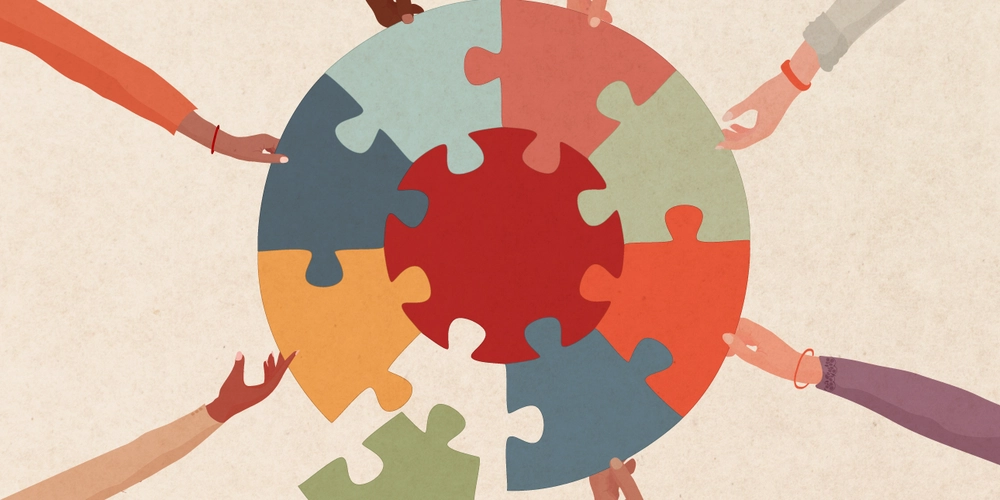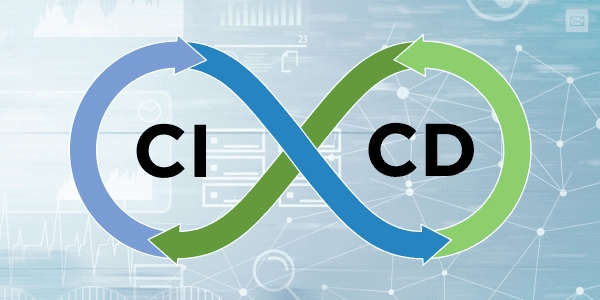Deciphering Collaboration
Nicholas Sadirac, the creator of the pedagogy used in schools such as Epita, Epitech, 42, and Zone01, believes in collective intelligence. This means that learners come together to share knowledge and skills. How do they achieve this? By collaborating on various projects while learning. At first, one might think collaboration is simple—form a group, complete the task, and move on. After a year at Zone01, working with different learners on various projects, I can confidently say it’s easy. However, what collaboration consists of is what makes it feel hard, but we all have to collaborate. So how do we navigate it? Over time, I’ve learned key principles that have helped me collaborate effectively and produce great results. Let me share them with you. Trust Your Group Members to Deliver I know trust doesn’t come easily, but hear me out. Imagine a scenario where tasks are delegated among group members with a set deadline—stick to your task, and let others stick to theirs. In a bee colony, foragers collect nectar, pollen, water, and propolis, while nurse bees care for the larvae. If foragers suddenly took over the role of nurse bees, the colony would starve. Even in a bee colony, the queen releases pheromones to maintain unity. Likewise, a group needs a leader to keep everything running smoothly. Often, we get distracted by someone else’s work—if you need to step in, make sure the task owner is aware and comfortable with it. But don’t neglect your responsibilities. A good leader ensures each member knows their role and holds them accountable while providing support where needed. Delegation without micromanagement is key. Never Underestimate Your Group Members One lesson I’ve learned is that I don’t know everything—and I never will. There’s always someone in the room who is better than me at a particular skill, sometimes even the person I least expect. When someone is assigned a task, even if you doubt their ability, let them do it. Until they ask for help or it becomes clear they’re struggling, allow them to grow. The best way to learn is through doing. If we don’t allow people to try, they’ll never learn. So, avoid stepping into someone else’s work unless it’s truly necessary. Accountability plays a crucial role in team success. Each member should take ownership of their work and deliver to the best of their ability. Setting clear expectations from the beginning helps reduce misunderstandings and excuses. Keep Communication Open Sharing information within a group is crucial. Be reachable, communicate, and express your ideas clearly. Stick to schedules, and if you can’t make it on time, inform the group in advance. Also, be a good listener—when someone shares information, process it before responding. Never dismiss someone’s idea outright. Be open to different perspectives, respect others’ opinions, and honor their work. Never overwrite someone’s contributions without discussing it—imagine spending the entire night coding, only to wake up and find your work replaced with another version that does the same thing. That can be frustrating and demotivating. Conflict resolution is just as important—when disagreements arise, address them constructively. Set up regular check-ins to ensure alignment, and if tensions escalate, involve a neutral mediator to guide the discussion. Don’t Focus on Noise Always consider the main goal of the group. Why are we doing this? What is our aim? When we answer these questions, we stay focused. Distractions come from both inside and outside the group. We often assume external noise is the bigger threat, but history shows that the greatest empires—like the Roman Empire, the Soviet Union, and the Qing Dynasty—collapsed from within. Internal issues develop slowly over time and can be hard to recognize. Some of the internal noise might include misunderstandings in the group, poor leadership, poor communication, or even a lazy group member who does not live up to their task. Address them early to maintain momentum and prevent the team from falling apart. Use the Available Tools We are more than 24 years into the 21st century, and we have a wealth of resources to make collaboration more efficient. Tools like GitHub, Miro, Slack, and Notion help streamline teamwork. Utilizing pull requests, issue tracking, and wikis can keep everyone aligned. Making short, clearly defined commits allows for easier tracking and debugging. This can be a lifesaver when a problematic code block affects overall functionality. For real-time collaboration and project management, consider: Trello or Asana – Task management tools to keep projects organized. Google Docs & Notion – Seamless document collaboration. Slack or Microsoft Teams – For communication and quick updates. Jira – Best for agile teams managing software projects. Figma – For design collaboration. Using these tools ensures that tasks are visible, responsibilities are clear, and ever

Nicholas Sadirac, the creator of the pedagogy used in schools such as Epita, Epitech, 42, and Zone01, believes in collective intelligence. This means that learners come together to share knowledge and skills. How do they achieve this? By collaborating on various projects while learning. At first, one might think collaboration is simple—form a group, complete the task, and move on. After a year at Zone01, working with different learners on various projects, I can confidently say it’s easy. However, what collaboration consists of is what makes it feel hard, but we all have to collaborate. So how do we navigate it? Over time, I’ve learned key principles that have helped me collaborate effectively and produce great results. Let me share them with you.
Trust Your Group Members to Deliver
I know trust doesn’t come easily, but hear me out. Imagine a scenario where tasks are delegated among group members with a set deadline—stick to your task, and let others stick to theirs. In a bee colony, foragers collect nectar, pollen, water, and propolis, while nurse bees care for the larvae. If foragers suddenly took over the role of nurse bees, the colony would starve. Even in a bee colony, the queen releases pheromones to maintain unity. Likewise, a group needs a leader to keep everything running smoothly.
Often, we get distracted by someone else’s work—if you need to step in, make sure the task owner is aware and comfortable with it. But don’t neglect your responsibilities. A good leader ensures each member knows their role and holds them accountable while providing support where needed. Delegation without micromanagement is key.
Never Underestimate Your Group Members
One lesson I’ve learned is that I don’t know everything—and I never will. There’s always someone in the room who is better than me at a particular skill, sometimes even the person I least expect. When someone is assigned a task, even if you doubt their ability, let them do it. Until they ask for help or it becomes clear they’re struggling, allow them to grow. The best way to learn is through doing. If we don’t allow people to try, they’ll never learn. So, avoid stepping into someone else’s work unless it’s truly necessary.
Accountability plays a crucial role in team success. Each member should take ownership of their work and deliver to the best of their ability. Setting clear expectations from the beginning helps reduce misunderstandings and excuses.
Keep Communication Open
Sharing information within a group is crucial. Be reachable, communicate, and express your ideas clearly. Stick to schedules, and if you can’t make it on time, inform the group in advance. Also, be a good listener—when someone shares information, process it before responding. Never dismiss someone’s idea outright. Be open to different perspectives, respect others’ opinions, and honor their work.
Never overwrite someone’s contributions without discussing it—imagine spending the entire night coding, only to wake up and find your work replaced with another version that does the same thing. That can be frustrating and demotivating. Conflict resolution is just as important—when disagreements arise, address them constructively. Set up regular check-ins to ensure alignment, and if tensions escalate, involve a neutral mediator to guide the discussion.
Don’t Focus on Noise
Always consider the main goal of the group. Why are we doing this? What is our aim? When we answer these questions, we stay focused. Distractions come from both inside and outside the group. We often assume external noise is the bigger threat, but history shows that the greatest empires—like the Roman Empire, the Soviet Union, and the Qing Dynasty—collapsed from within. Internal issues develop slowly over time and can be hard to recognize. Some of the internal noise might include misunderstandings in the group, poor leadership, poor communication, or even a lazy group member who does not live up to their task. Address them early to maintain momentum and prevent the team from falling apart.
Use the Available Tools
We are more than 24 years into the 21st century, and we have a wealth of resources to make collaboration more efficient. Tools like GitHub, Miro, Slack, and Notion help streamline teamwork. Utilizing pull requests, issue tracking, and wikis can keep everyone aligned. Making short, clearly defined commits allows for easier tracking and debugging. This can be a lifesaver when a problematic code block affects overall functionality.
For real-time collaboration and project management, consider:
- Trello or Asana – Task management tools to keep projects organized.
- Google Docs & Notion – Seamless document collaboration.
- Slack or Microsoft Teams – For communication and quick updates.
- Jira – Best for agile teams managing software projects.
- Figma – For design collaboration.
Using these tools ensures that tasks are visible, responsibilities are clear, and everyone stays updated.
Final Thoughts
When we join a group to work, we all hope for the best. We want to see the project succeed. Coming together, working cooperatively, and achieving a shared goal is priceless. Having good chemistry within the team is incredibly fulfilling.
To collaborate effectively:
- Trust your team members and hold them accountable.
- Communicate openly and resolve conflicts constructively.
- Stay focused on the goal and minimize distractions.
- Use modern collaboration tools to stay organized.
By embracing these principles, we can create a strong, productive, and harmonious team environment. We should always strive to give our best for the success of the project.









































































































































































![[The AI Show Episode 142]: ChatGPT’s New Image Generator, Studio Ghibli Craze and Backlash, Gemini 2.5, OpenAI Academy, 4o Updates, Vibe Marketing & xAI Acquires X](https://www.marketingaiinstitute.com/hubfs/ep%20142%20cover.png)



























































































































![[FREE EBOOKS] The Kubernetes Bible, The Ultimate Linux Shell Scripting Guide & Four More Best Selling Titles](https://www.javacodegeeks.com/wp-content/uploads/2012/12/jcg-logo.jpg)



![From drop-out to software architect with Jason Lengstorf [Podcast #167]](https://cdn.hashnode.com/res/hashnode/image/upload/v1743796461357/f3d19cd7-e6f5-4d7c-8bfc-eb974bc8da68.png?#)






































































































.png?#)




.jpg?#)
































_Christophe_Coat_Alamy.jpg?#)








































































































![Rapidus in Talks With Apple as It Accelerates Toward 2nm Chip Production [Report]](https://www.iclarified.com/images/news/96937/96937/96937-640.jpg)








































































































































